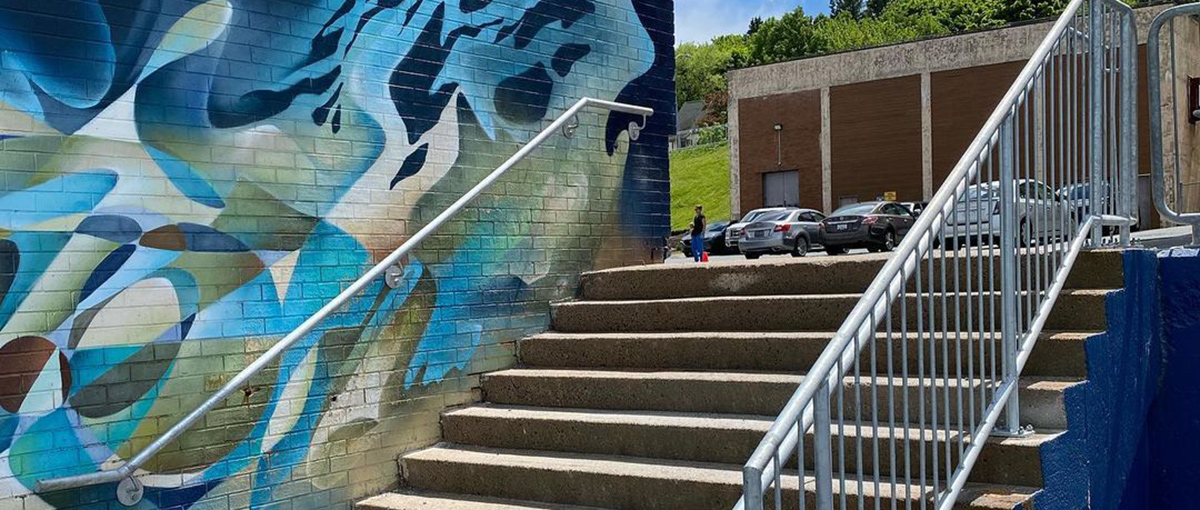
This year-long project saw the completion of long runs of guard rail and the installation of railings on new and existing staircases.
The initial visit included walking the job site to collect measurements and data to assess the scope of the project. This was one of the larger projects that we have done, so we endeavoured to maintain our high standard right from the start of the project.
These types of jobs must be completed to meet a high standard. Municipal projects, in particular, require quality workmanship in order to provide maximum benefit to residents, new and existing, for years to come.
The old railings that had to be replaced had been in use for decades; there were sections which had rusted over time and were very unstable. With the support of contractors, we were able to have the concrete walls and stairs repaired so that the new railings could be put in place. New galvanized railings were fabricated and installed to replace the existing railings which ensured that the public could safely use the steps without fear of falling.
Building steel rails, or any metal rails for that matter, needs to be done in such a way that is is sturdy and can handle the environment that it will be used in. The design included a round steel tube frame with round steel pickets and square steel base plates, which were galvanized to add protection from the elements. This made the rails extremely durable and offered cosmetic appeal. These rails are unlike common painted railings and are coated inside and out to allow for years of use.
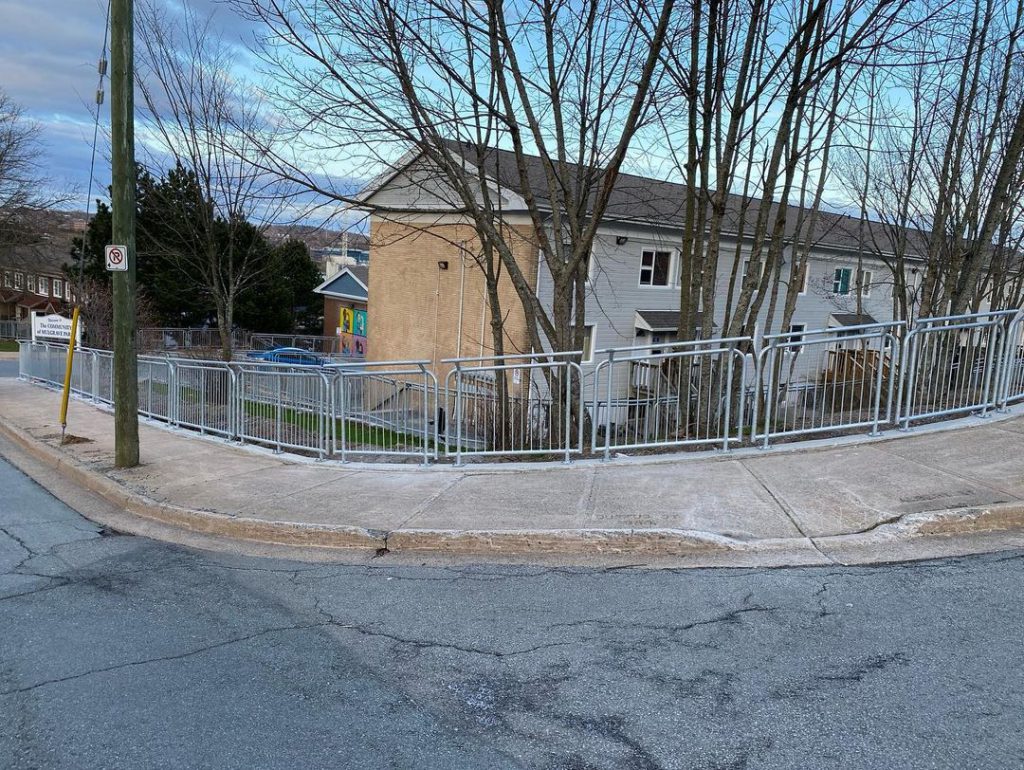
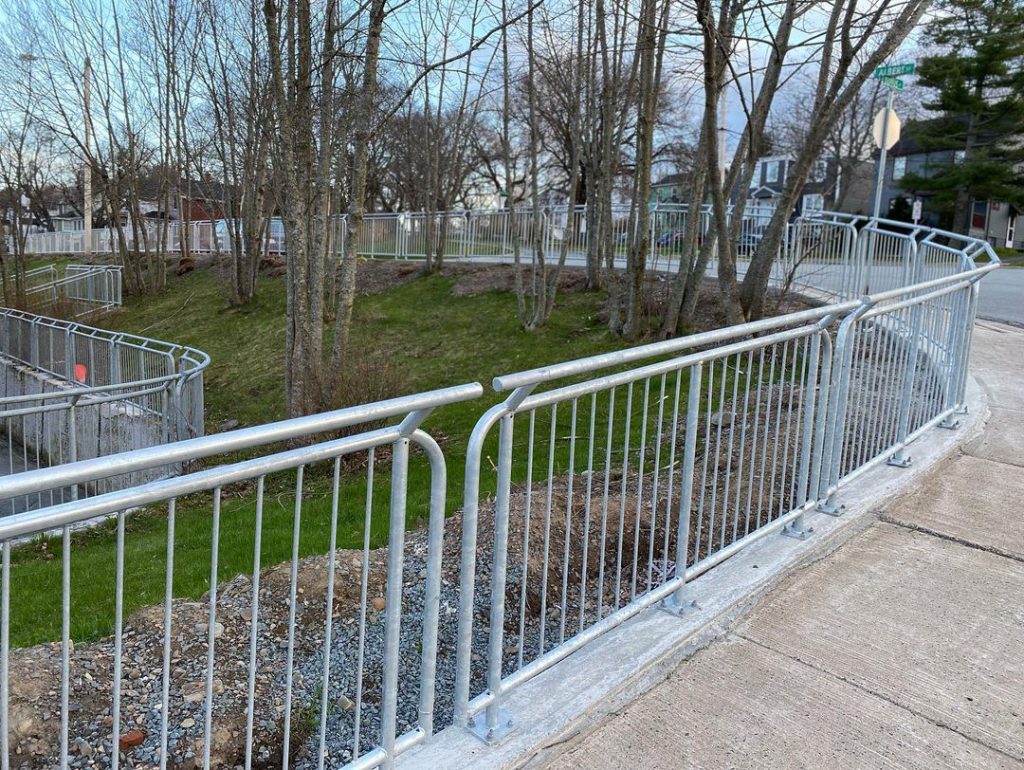
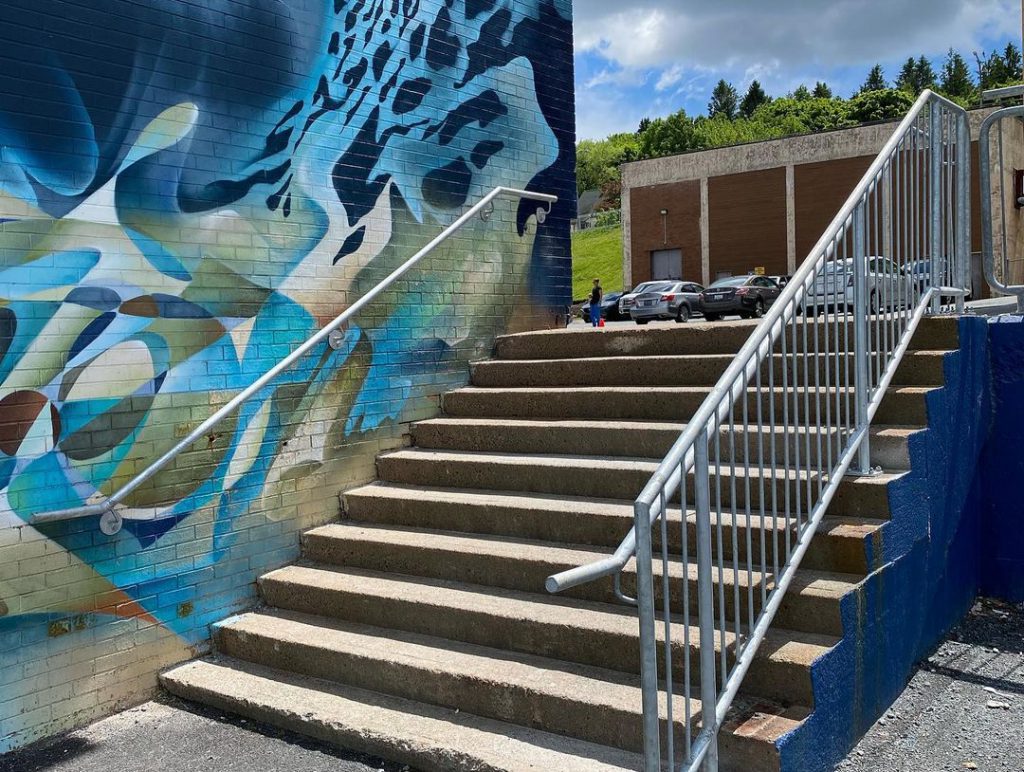
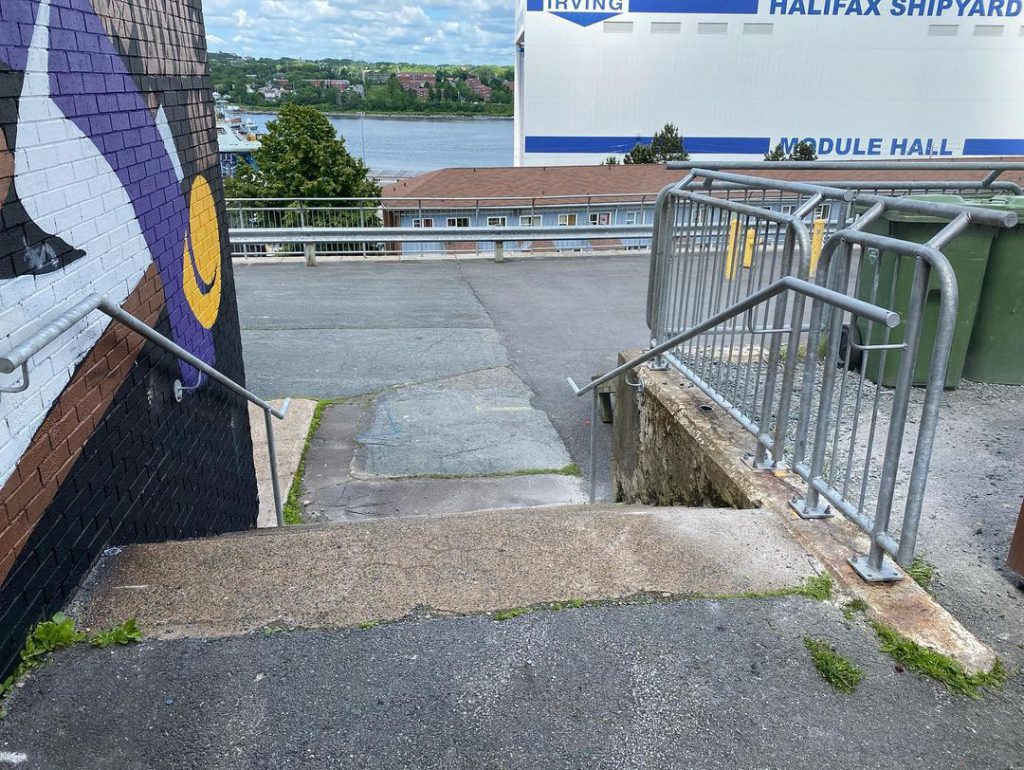
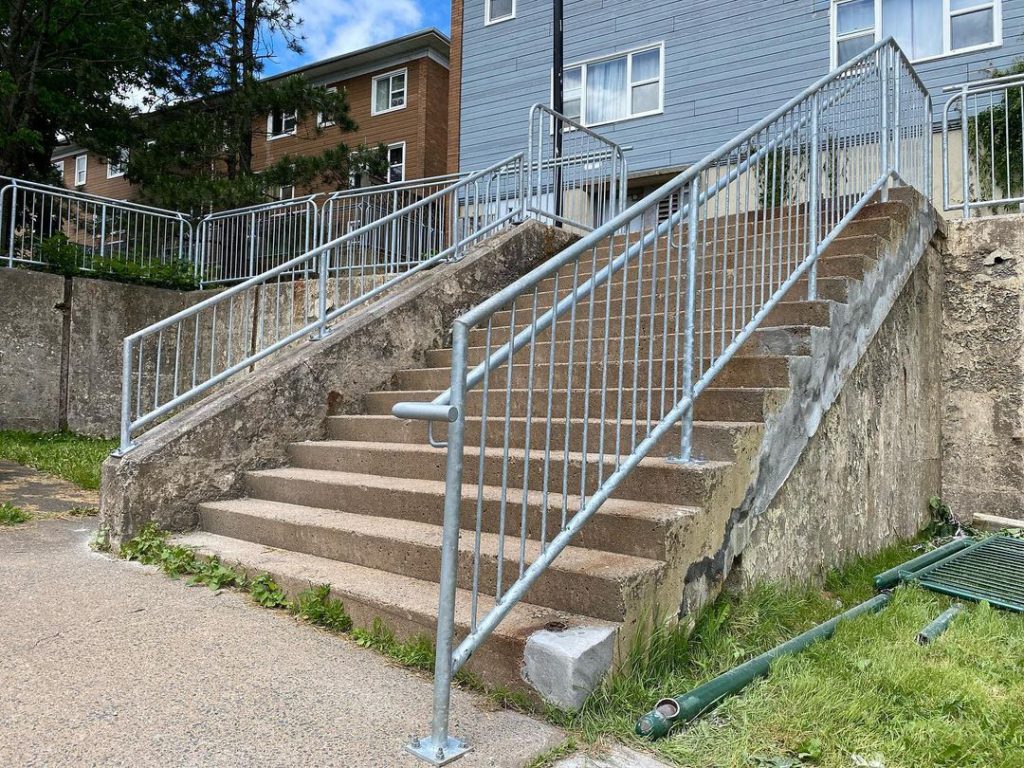
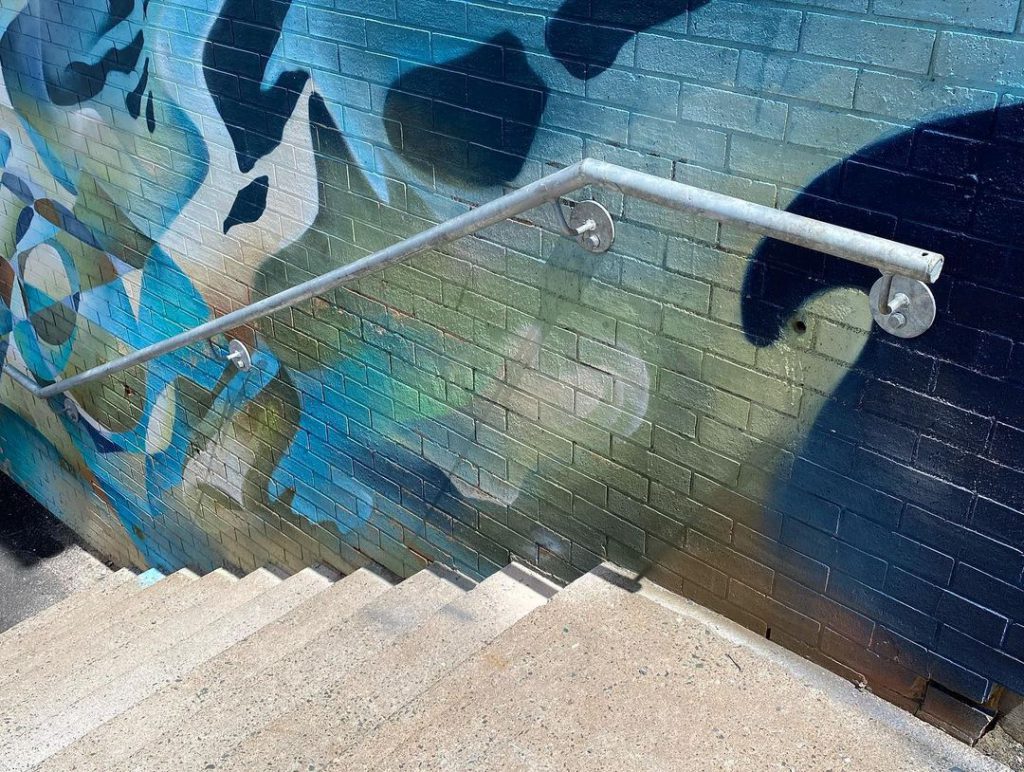
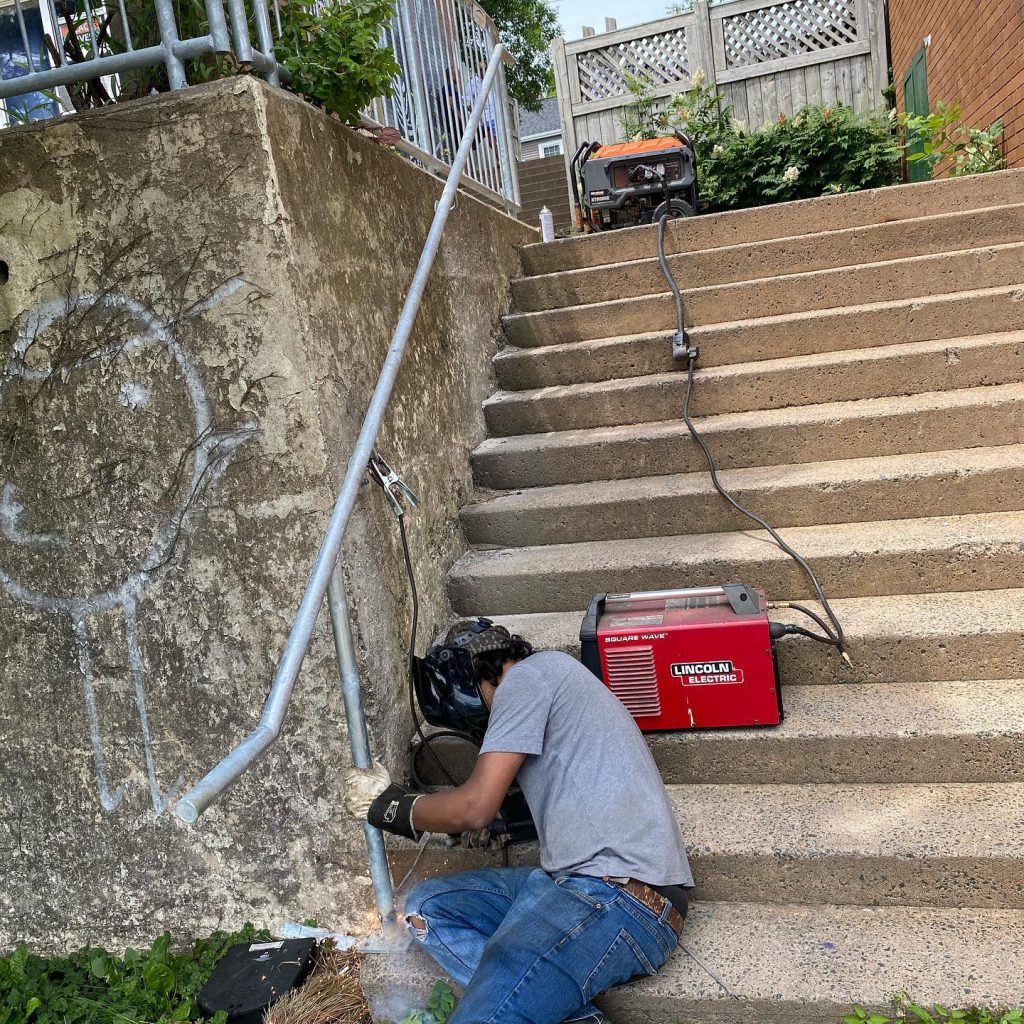
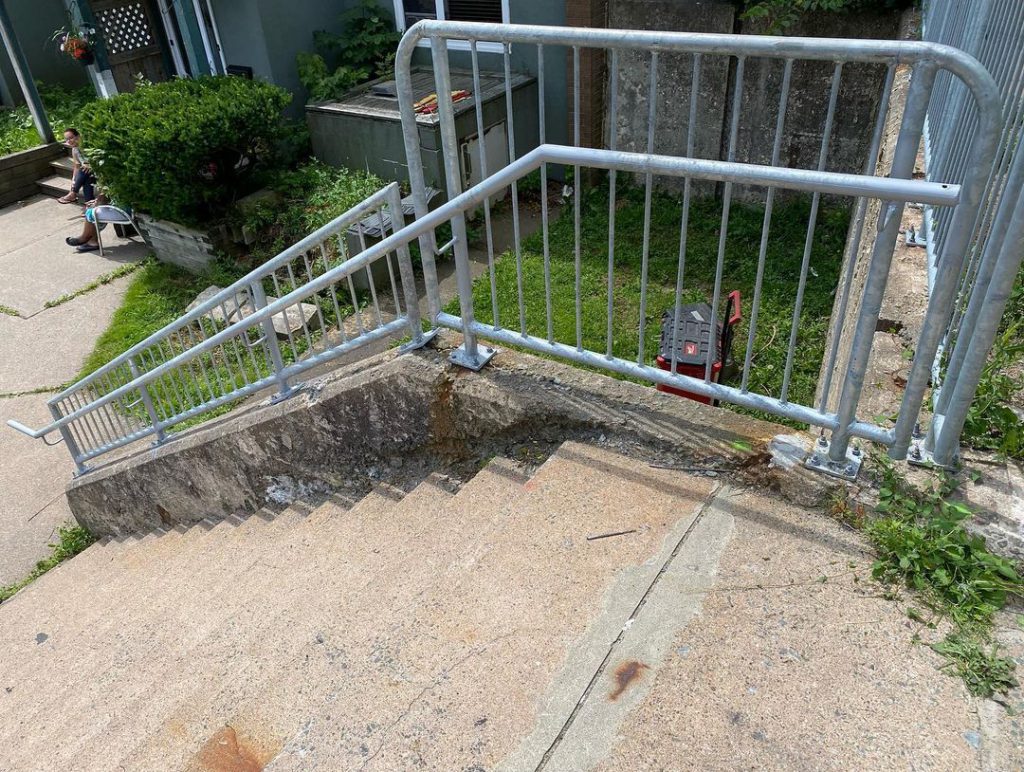
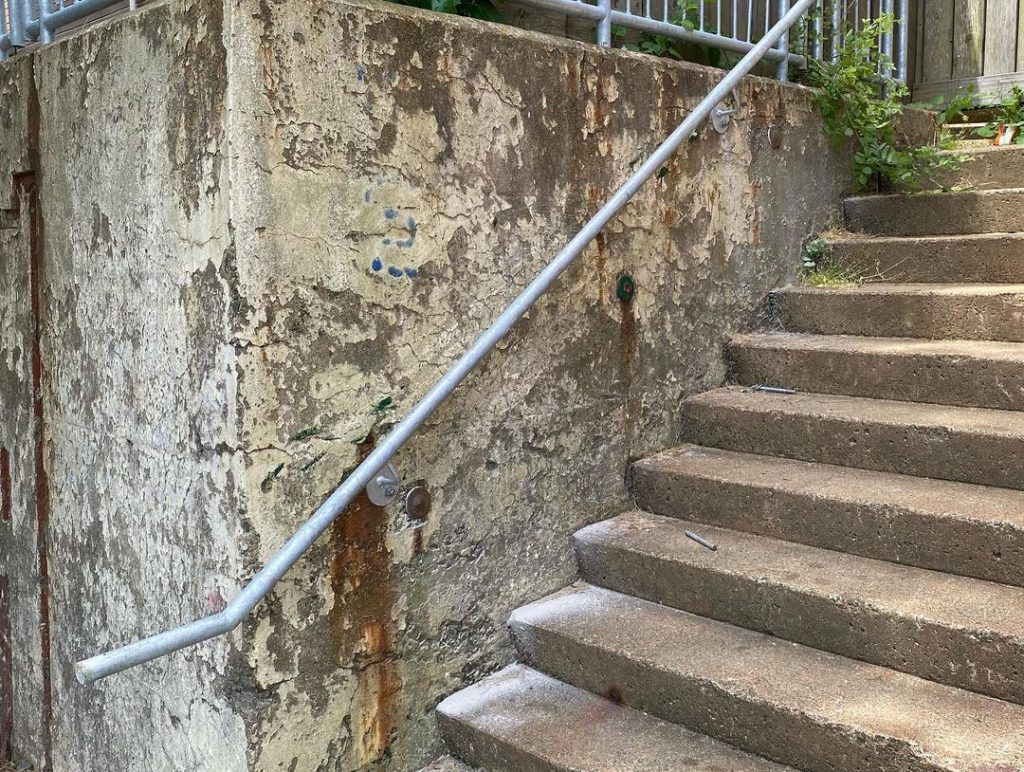
The frames, pickets, baseplates and end caps were first cut to size to start operation. For each section of railing, the measurement and angle was unique to allow for proper fitment. Following the cutting process, we bent the round tubed and bars. Once the materials were all prepared, the fitter set the layout of the railing and tacked each member together. These were then stacked in piles for the welders to weld all the connections. After welding, the tubes needed to be vented for the galvanizing process, cutting small holes in the top and bottom of each hollow tube area to meet the specifications. Once the railings were cleaned up they were shipped out to the galvanizers to be hot dipped. After galvanizing, the rails were ready to be installed.
Installing was undoubtedly the most critical part. From pick-up and delivery to levelling and anchoring, each railing needed to be drilled and anchored to the concrete. We used hot dipped wedge anchors which were drilled, hammered and impacted down. Each railing was centred and levelled and ready for the client for many years of use.
Give us a call today or email us and we can get you started on your next project.